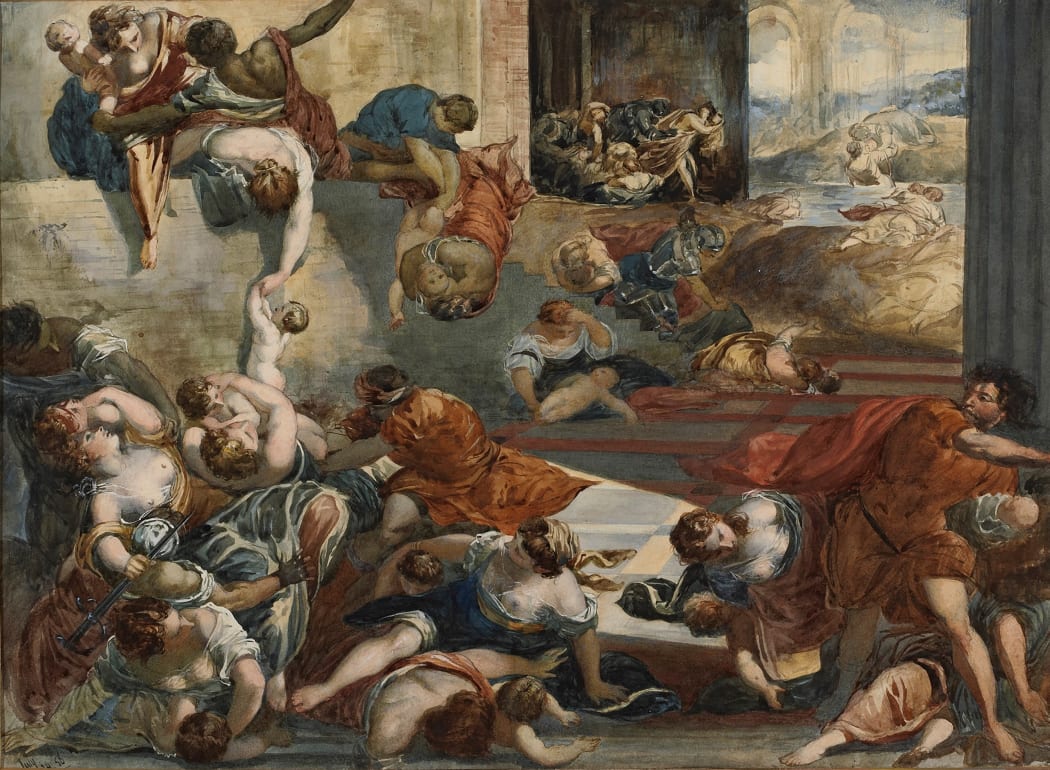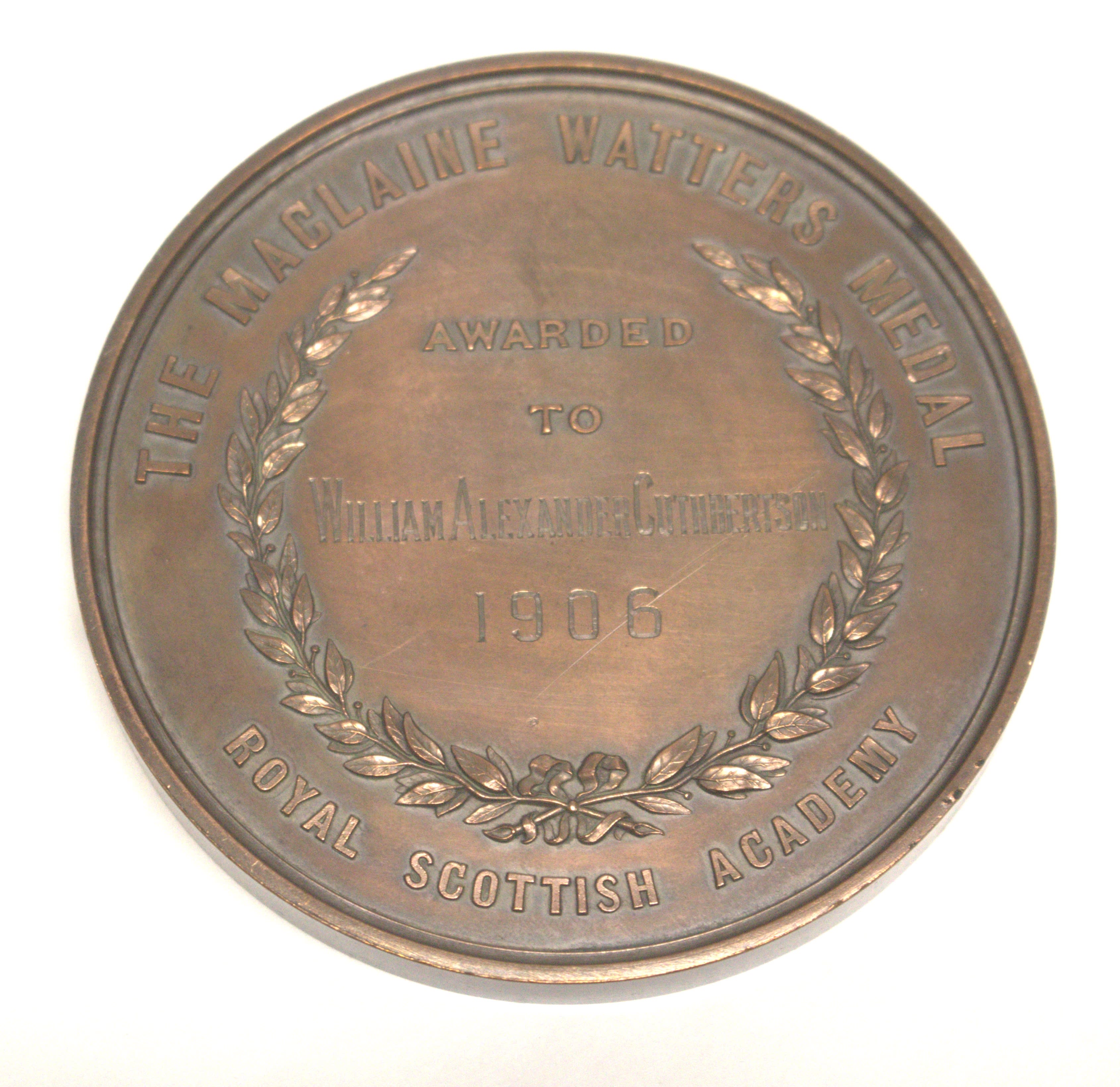
With Awards Season now in full swing, we thought we'd share some of the background stories behind our own “Academy Awards”.
This is the first of three articles celebrating our awards, and begins with the earliest to be established - which is still being awarded 170 years later!
The Keith Prize (Endowed 1851, first presented 1854)
In 1851, the two surviving Trustees of Alexander Keith of Dunottar (1736-1819) an Edinburgh-based solicitor wrote to our President and Council, offering a one-off donation of £250 being the residue of Keith’s estate. They stipulated that the money be used to endow a biennial award in his name. Much earlier, they had distributed £1000 between the Royal Society of Edinburgh and the Royal Scottish Society of Arts, with the former introducing its “Keith Prize” in 1841.
The RSA Keith prize was first awarded in 1854. It was intended to go to the top student in the Academy’s Life School, who had exhibited a historical picture at the 1853 RSA Annual Exhibition which was not only of quality, but importantly showed a period of diligent study and application by the student. Council reserved the right to withhold the premium if the candidates failed to evidence this.
Robert Herdman, the son of a Perthshire Minister, was the very first recipient of the Keith Prize in 1854, and was given a bronze replica of the Presidential Medal.
It was noted at the time that a mere financial award or a medal wouldn’t actively assist the winning student in their artistic pursuits. So, it was decided that a small financial contribution would be made. This enabled Herdman to undertake travel to Italy. The intention was that he would study the work of the early painters there, and make faithful copies of what he saw. On his return these works were examined by the President and Council and purchased from him for the RSA Collections where they remain.
The Keith Prize continues to be awarded at the RSA Annual Exhibition, with only a few gaps in the sequence where the Council exercised their power of withholding the prize.
Amongst its long list of winners, no fewer than 35 have gone on to be elected as Members of the Academy. Robert Herdman’s son, Robert Duddingston Herdman, received the prize in 1886 and again in 1887. The Herdman’s remain the only pair of relatives to have received the Prize. Only four others have been awarded it more than once; Robert Gibb (1866, 1867 and 1869), Tom Scott (1884 and 1885), David M Sutherland (1908 and 1911) and William Mervyn Glass (1912 and 1920).
The Stuart Prize (Endowed 1864, first presented 1865)
The next prize was offered in 1864 from Lady Katherine Stuart of Allanbank (c.1805-68). The daughter of the late Professor of Anatomy at Edinburgh, Alexander Monro tertius, she offered £400, the interest accruing annually to finance the annual award. She hoped that the prize would be offered to a student at either the RSA Life School or the Edinburgh School of Art (until 1859 the Trustees Academy). Beyond this, Lady Stuart left the details in the hands of the President and Council.
It was decided that an annual prize of £30 would be awarded in the first year, split into a first prize of £20 and a second prize of £10. There were two categories – drawing or sculpture. The subject was left open, but it was advised that a passage from the Scriptures, History, or Literature would prove the most appropriate to illustrate. No colour was permitted, but the drawings, which were to be in chalk, charcoal, lead pencil or pen and ink, should indicate light and shade.
The first competition in 1865 attracted just 7 entries, 6 from the RSA School and 1 from Edinburgh School of Art. First prize went to RSA student William Small, for a pen and ink drawing showing the wrestling match between Mondamin and Hiawatha from Longfellow’s ‘Hiawatha.’ The remaining £10 for the second prize was enhanced by a further £5 from the Academy’s own funds, and split equally between A C Beattie, A D Longmuir, and W D Stevenson who submitted a basso-relievo sculpture. So as not to let the prize go to William Small’s head, Council noted that his work was deficient in certain aspects but hoped that these would be rectified as he continued his studies. In a similar vein, fault was also found in the work of the other three.
The following year, Beattie and Longmuir were again praised for their efforts but this time without remuneration. Stevenson was awarded the second prize for the marked improvement in his work, another alto-relievo. In 1867 only three chalk drawings were submitted, and Council deemed none of the works worthy of recognition. Despite this, interest in the Award did pick up again and it continues to be presented.
What befell Small’s inaugural winning entry is not known. However, someone had the foresight to have the winning drawing professionally photographed and 2 copies of this print survive in our Collections. Unmarked, their significance was only recently identified.

The Maclaine Watters Medal (presented 1878, first awarded 1879)
James Maclaine Watters (1846-79) was the 2nd son of Andrew Watters, a Commission Merchant, and his wife Catherine McLannahan.
From an early age Watters displayed a great taste for art and travelled extensively in pursuit of viewing works first hand. He commenced his travels aged just 17, travelling firstly to Italy, where he was most impressed by what he found in Rome. Subsequently and successively, he travelled to Germany, France, Spain, Switzerland, Algiers, and finally the United States of America. He put this interest into practice, executing works in both oil and watercolour, which he exhibited at RSA Annual Exhibitions and in the Annual Exhibitions of the Royal Glasgow Institute of the Fine Arts.
James Maclaine Watters was also a champion of aspiring artists. A tangible form of this encouragement was his endowment of the Maclaine Watters Medal, just a few months before his death.
In 1872, Watters was appointed a Supernumeracy Lieutenant in the Edinburgh Artillery Militia, rising to Captain in March 1874. The following year the Regiment became The Duke of Edinburgh’s Own Edinburgh Artillery Militia with the approval of Queen Victoria.
Captain Watters had enjoyed a privileged life to this point, living comfortably on Dalkeith Road, Edinburgh. It was there that his father, Andrew Watters, died 1875. Amongst his estate were shares in the Glasgow City Bank. In 1878, the Glasgow City Bank would collapse with liabilities of £12.4million. Amongst the major stakeholders, who were now liable to meet these losses, were the heirs of Andrew Watters. Broken by this financial calamity, James Maclaine Watters died at his home in 1879.
There’s been many recipients of the medal over the years, and one that stands out is William Alexander Cuthbertson. A student at Edinburgh School of Art, Cuthbertson enjoyed a fascinating career.
After finishing his studies, Cuthbertson studied at l’Academie Julian in Paris. The following year, 1902, he was appointed Ship’s Artist aboard the research vessel S.Y. ‘Scotia’. Under command of Britain’s most experienced polar explorer William Speirs Bruce (1867-1921), the ‘Scotia’ embarked under the banner of the Scottish National Antarctic Expedition to the South Orkney Islands and the Weddell Sea. The expedition’s main objective was to establish the Orcadas Weather Station on Lawrie Island; the first permanent weather station in the Antarctic which still operates to this day.
On his return, Cuthbertson was determined to pursue his artistic studies and successfully enrolled in the Academy’s Life School. In 1906, he received a Commendation for Drawing and was awarded the Maclaine Watters Medal. A prize-winner again in 1907, Cuthbertson made history by becoming the only person ever to be awarded the Maclaine Watters Medal for a second time.


Cuthbertson’s prizes in 1908 also included the Chalmers Bursary, and a Commendation in the Stuart Prize competition. Through the generosity of Cuthbertson’s descendants, both his Maclaine Watters medals have since been gifted to our Collections.
In 1909, having completed his studies, William Alexander Cuthbertson was the recipient of the Carnegie Travel Scholarship, which we will examine more closely in our next blog post!

